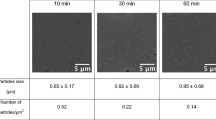Abstract
In the automotive industry aluminium and its corresponding semi-finished products contribute an essential part to the aim of weight reduction in car body structures. Aluminium alloys of the 6000 series with Mg and Si contents are preferred because of the possibility to increase strength by ageing processes. However, the cold formability in comparison to other materials like mild steels is quite low and due to this, complex parts are only producible at higher temperatures. Therefore, the so called Tailor Heat Treatment was developed to improve the cold formability of aluminium alloys. In this approach, a short-term heat treatment is conducted to achieve a local softening of the material due to dissolution of Mg and Si clusters (retrogression). This effect is used to improve the material flow, relief critical forming zones and enhance the overall formability of the material. Afterwards, strength can be increased again by ageing processes. However, up till now a holistic process understanding, taking into account all process parameters as well as a microstructural explanation is missing. Therefore, the focus of the fundamental investigations lies on connections between the mechanical properties and short-term heat treatment with industry-relevant heating rates as well as natural and artificial ageing process. Conclusively, the evolution of the mechanical properties with regard to the natural ageing process is compared with findings of DSC analysis, which were discussed in Part A. Based on these results, a process window is derived for the subsequent forming process and the final mechanical properties of the final part in dependency of the forming history as well as the artificial ageing process, are identified.









Similar content being viewed by others
References
Fontaras G, Dilara P (2012) The evolution of European passenger car characteristics 2000–2010 and its effects on real-world CO2 emissions and CO2 reduction policy. Energy Policy 49:719–730
Dhingra R, Das S (2014) Life cycle energy and environmental evaluation of downsized versus lightweight material automotive engines. J Clean Prod 85:347–358
Ostermann F (2014) Anwendungstechnologie Aluminium, 3.th edn. Springer
Kleiner M, Geiger M, Klaus A (2003) Manufacturing of lightweight components by metal forming. CIRP Ann Manuf Technol 52(2):521–542
Edwards GA, Stiller K, Dunlop GL et al (1998) The precipitation sequence in Al–Mg–Si alloys. Acta Mater 46(11):3893–3904
Geiger M, Merklein M, Vogt U (2009) Aluminum tailored heat treated blanks. Prod Eng Res Devel 3(4–5):401–410
Vollertsen F, Hofmann A (2000) Modelling the deep drawing of process optimized blanks. In: Proceedings of the 20th Biennal IDDRG Congress, pp 67–76
Vollertsen F, Sprenger A, Kraus J et al (1999) Extrusion, channel, and profile bending: a review. J Mater Process Technol 87:1–27
Merklein M, Lechner M, Kuppert A (2012) Enhancement of formability of aluminum alloys in multi-stage forming operations by a local intermediate heat treatment. Prod Eng Res Devel 6(6):541–549
Froeck H, Graser M, Reich M et al (2016) Influence of short-term heat treatment on the microstructure and mechanical properties of EN AW-6060 T4 extrusion profiles: Part A. Prod Eng Res Devel. doi:10.1007/s11740-016-0683-6
Osten J, Milkereit B, Schick C et al (2015) Dissolution and precipitation behaviour during continuous heating of Al–Mg–Si alloys in a wide range of heating rates. Materials 8(5):2830–2848
Murayama M, Hono K (1999) Pre-precipitate clusters and precipitation processes in Al–Mg–Si alloys. Acta Mater 47(5):1537–1548
An YG, Vegter H, Zhuang L et al (2002) Fast aging kinetics of the AA6016 Al-Mg-Si alloy and the application in forming process. Metall Mat Trans A 33(10):3121–3126
Merklein M, Lechner M, Graser M (2015) Influence of a short-term heat treatment on the formability and ageing characteristics of aluminum profiles. Lasers in Manufacturing Conference
Acknowledgments
The authors would like to thank the German Research Foundation (DFG) for supporting the present investigations which were performed within the scope the research project “Improvement of formability of extruded aluminium profiles by a local short-term heat treatment (DFG KE616/22-1/DFG ME2043/45-1)”.
Author information
Authors and Affiliations
Corresponding author
Rights and permissions
About this article
Cite this article
Graser, M., Fröck, H., Lechner, M. et al. Influence of short-term heat treatment on the microstructure and mechanical properties of EN AW-6060 T4 extrusion profiles—Part B. Prod. Eng. Res. Devel. 10, 391–398 (2016). https://doi.org/10.1007/s11740-016-0684-5
Received:
Accepted:
Published:
Issue Date:
DOI: https://doi.org/10.1007/s11740-016-0684-5




